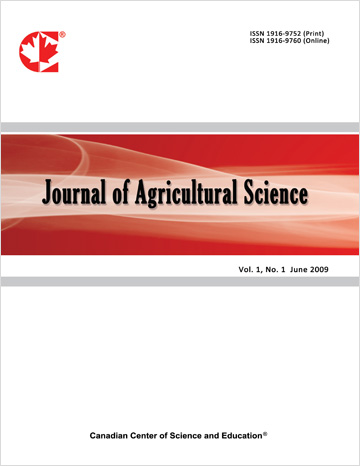Changes in Stress Indicators of Egg-Type Chickens in Response to Different Intensive Housing Systems in Humid Tropics
- Olufemi Alabi
- Foluke Aderemi
- Daniel Afolabi
- Banwo Alabi
Abstract
Welfare of the animals is of global interest recently and housing of egg-type chickens inside battery cages is being banned in many developed countries in view of the stress to which the chickens are exposed. Measurement of some blood parameters such as White blood cell (WBC) counts and differential leucocytes counts and Heterophil to lymphocyte ratio have been used to assess stress among chickens. Changes in these parameters were therefore investigated among chickens in different housing systems in a typical humid tropical region of the world where animal welfare issue is currently unpopular.108, 17-weeks old Super Black hens (SBL) and 108, 17-weeks old Super Brown hens (SBR) were randomly allotted to three different intensive housing systems of Partitioned Battery Cage (PBC), Extended Battery Cage (EBC) and Deep Litter System (DLS) in a Randomized Complete Block (RCB) design with 36 hens per housing system each with three replicates. The experiment lasted 37 weeks. Parameters measured included Total White Blood cells (WBC), Differential Leukocytes while Heterophil-Lymphocytes ratios (H/L) were calculated .Data collected were subjected to statistical analysis using 2-way ANOVA while means were separated with Duncan’s Multiple Range Test (DMRT). Housing systems had significant effect on the differential leukocyte counts and H/L ratios but not on WBC counts. Hens housed inside PBC (control) had the highest values of H/L ratio with the least values from those housed on DLS. Meanwhile, the parameters investigated were not significantly affected by the strain. Higher values of H/L ratio recorded by hens housed on PBC which is the conventional system of housing layers in the tropics are indications of stress on the chickens due to lack of freedom to move about and which is against the welfare of the chickens.
- Full Text:
 PDF
PDF
- DOI:10.5539/jas.v6n4p151
Journal Metrics
- h-index: 67
- i10-index: 839
- WJCI (2023): 0.884
- WJCI Impact Factor (2023): 0.196
Index
- AGRICOLA
- AGRIS
- BASE (Bielefeld Academic Search Engine)
- Berkeley Library
- CAB Abstracts
- ChronosHub
- CiteSeerx
- CNKI Scholar
- Copyright Clearance Center
- CrossRef
- DESY Publication Database
- DTU Library
- e-Library
- EBSCOhost
- EconPapers
- Elektronische Zeitschriftenbibliothek (EZB)
- EuroPub Database
- Excellence in Research for Australia (ERA)
- Google Scholar
- Harvard Library
- IDEAS
- iDiscover
- Jisc Library Hub Discover
- JournalTOCs
- KindCongress
- LIVIVO (ZB MED)
- LOCKSS
- Max Planck Institutes
- Mendeley
- MIAR
- Mir@bel
- NLM Catalog PubMed
- Norwegian Centre for Research Data (NSD)
- Open J-Gate
- OUCI
- PKP Open Archives Harvester
- Polska Bibliografia Naukowa
- Qualis/CAPES
- RefSeek
- RePEc
- ROAD
- ScienceOpen
- Scilit
- SCiNiTO
- Semantic Scholar
- SHERPA/RoMEO
- Southwest-German Union Catalogue
- Standard Periodical Directory
- Stanford Libraries
- SUDOC
- Swisscovery
- Technische Informationsbibliothek (TIB)
- Trove
- UCR Library
- Ulrich's
- UniCat
- Universe Digital Library
- WorldCat
- WRLC Catalog
- Zeitschriften Daten Bank (ZDB)
Contact
- Anne BrownEditorial Assistant
- jas@ccsenet.org
